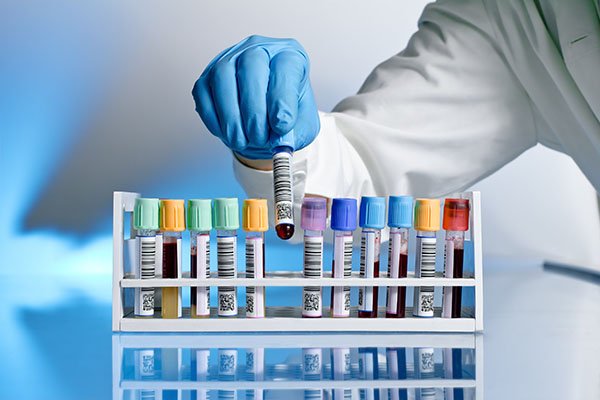Maintaining Blood Sample Integrity
Blood sample integrity is crucial in the healthcare industry as it directly impacts the accuracy of diagnostic test results. Proper handling and storage of blood samples are essential to ensure reliable and valid test results. In this blog post, we will explore the importance of maintaining blood sample integrity and provide tips on how to properly handle and store blood samples.
The Importance of Blood Sample Integrity
When a patient's blood sample is collected for testing, it is essential that the sample remains intact and free from contamination to ensure accurate results. Any deviations from proper handling and storage procedures can compromise the integrity of the sample, leading to unreliable test results.
Maintaining blood sample integrity is vital for the following reasons:
Accurate Diagnosis: Blood tests play a crucial role in the diagnosis and monitoring of various medical conditions. Inaccurate test results due to compromised sample integrity can lead to misdiagnosis and improper treatment.
Patient Safety: Reliable test results are essential for determining the appropriate course of treatment for patients. Maintaining blood sample integrity helps in ensuring patient safety by providing accurate diagnostic information.
Quality Assurance: Healthcare providers rely on the accuracy of test results to make informed decisions about patient care. Proper handling of blood samples is essential for maintaining quality assurance in diagnostic testing.
Proper Handling of Blood Samples
Proper handling of blood samples begins with the collection process and extends through transportation and storage. Here are some tips for ensuring the integrity of blood samples:
Collection Process
Use sterile equipment: It is essential to use sterile needles and syringes for collecting blood samples to prevent contamination.
Properly identify samples: Accurate labeling of blood samples with patient information is crucial to prevent mix-ups and ensure proper tracking.
Follow correct collection procedures: Healthcare providers should follow established protocols for collecting blood samples to minimize the risk of errors.
Transportation
Use appropriate packaging: Blood samples should be transported in leak-proof containers to prevent spillage and contamination.
Maintain proper temperature: Some blood samples may require refrigeration during transportation to preserve sample integrity.
Handle samples with care: Avoid shaking or jostling blood samples during transportation to prevent hemolysis (destruction of red blood cells).
Storage
Store samples at the correct temperature: Different blood samples may require specific temperature conditions for proper storage. It is important to follow guidelines for temperature control to maintain sample integrity.
Protect samples from light: Some blood components are light-sensitive and may degrade if exposed to light. Store samples in opaque containers or cover them to prevent light exposure.
Monitor expiration dates: Blood samples have a limited shelf life, and it is essential to track expiration dates to ensure sample integrity.
Quality Control Measures
In addition to proper handling and storage, quality control measures are essential for maintaining blood sample integrity. Quality control procedures help in identifying and addressing any issues that may compromise sample integrity. Here are some quality control measures to consider:
Regular Equipment Maintenance
Regular calibration and maintenance of equipment used for collecting and storing blood samples are essential for ensuring accurate test results. Healthcare facilities should have protocols in place for routine equipment inspection and maintenance to prevent malfunctions.
Training and Education
Proper training of healthcare staff on sample handling protocols and procedures is crucial for maintaining blood sample integrity. Ongoing education and training help in reinforcing best practices and ensuring compliance with quality standards.
Documentation and Record-Keeping
Accurate documentation of sample collection, transportation, and storage is essential for traceability and accountability. Healthcare providers should maintain detailed records of blood sample handling procedures to track sample integrity and ensure quality assurance.
Conclusion
Maintaining blood sample integrity is essential for accurate diagnostic testing and ensuring patient safety. Proper handling, transportation, and storage of blood samples are critical steps in maintaining sample integrity. By following established protocols, implementing quality control measures, and providing staff training, healthcare facilities can uphold the integrity of blood samples and achieve reliable test results.

Related Videos
Disclaimer: The content provided on this blog is for informational purposes only, reflecting the personal opinions and insights of the author(s) on phlebotomy practices and healthcare. The information provided should not be used for diagnosing or treating a health problem or disease, and those seeking personal medical advice should consult with a licensed physician. Always seek the advice of your doctor or other qualified health provider regarding a medical condition. Never disregard professional medical advice or delay in seeking it because of something you have read on this website. If you think you may have a medical emergency, call 911 or go to the nearest emergency room immediately. No physician-patient relationship is created by this web site or its use. No contributors to this web site make any representations, express or implied, with respect to the information provided herein or to its use. While we strive to share accurate and up-to-date information, we cannot guarantee the completeness, reliability, or accuracy of the content. The blog may also include links to external websites and resources for the convenience of our readers. Please note that linking to other sites does not imply endorsement of their content, practices, or services by us. Readers should use their discretion and judgment while exploring any external links and resources mentioned on this blog.
